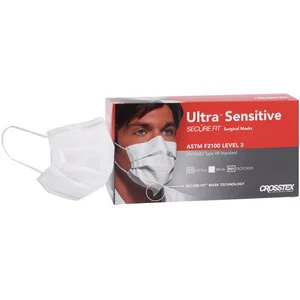Filter Products
Filter Products
Face Masks
As low as
$17.56As low as
$10.25As low as
$4.11As low as
$18.02As low as
$7.21As low as
$16.47What are dental masks and why are they important?
Dental face masks are masks designed to be worn by dental professionals during procedures to protect against the transmission of infectious agents. They are important because they act as a barrier between the dental professional and the patient, reducing the risk of disease transmission.
What types of masks are used in dentistry?
There are three main types of dental face masks: earloop masks, tie-on masks, and respirator masks.
- Earloop masks are the most common and are designed to be worn by dental professionals during most procedures.
- Tie-on masks are similar to earloop masks but are tied behind the head instead of looped over the ears.
- Respirator masks are available in various levels of protection, including N95, which filters out at least 95% of airborne particles. They are used in high-risk situations where airborne transmission is a concern, such as healthcare settings.
Choosing the right level of protection based on the particular dental procedure being carried out and the likelihood of exposure to infectious agents is crucial for dental professionals.
What is the difference between Level 1, Level 2, and Level 3 face masks?
There are different types and levels of dental masks that provide varying levels of protection depending on the specific needs of dental professionals.
- ASTM Level 1 face masks provide the lowest level of barrier protection and are intended for use during procedures with low levels of aerosols, sprays, and fluids. These masks are often used during basic exams, prophylaxis, and orthodontic procedures.
- ASTM Level 2 face masks offer a moderate level of barrier protection and are designed for procedures involving moderate levels of aerosols, sprays, and fluids, such as restorative dentistry and scaling and root planing
- ASTM Level 3 face masks provide the highest level of barrier protection and are intended for use during procedures with high levels of aerosols, sprays, and fluids, such as surgical procedures, periodontal surgery, and implant placement.
It's essential to note that these levels of masks are established by the American Society for Testing and Materials (ASTM) and are based on the masks' ability to filter out particles of a specific size and their resistance to fluids. Therefore, it's crucial to choose the appropriate mask level based on the procedure's level of aerosols, sprays, and fluids, as well as the patient's medical history and the dental professional's judgment.
How often should dental masks be changed?
Dental face masks should be changed between patients or when they become moist. Moist masks are less effective at filtering out airborne particles and can increase the risk of disease transmission. It is important to dispose of used masks properly and to wash your hands after removing a mask.
























